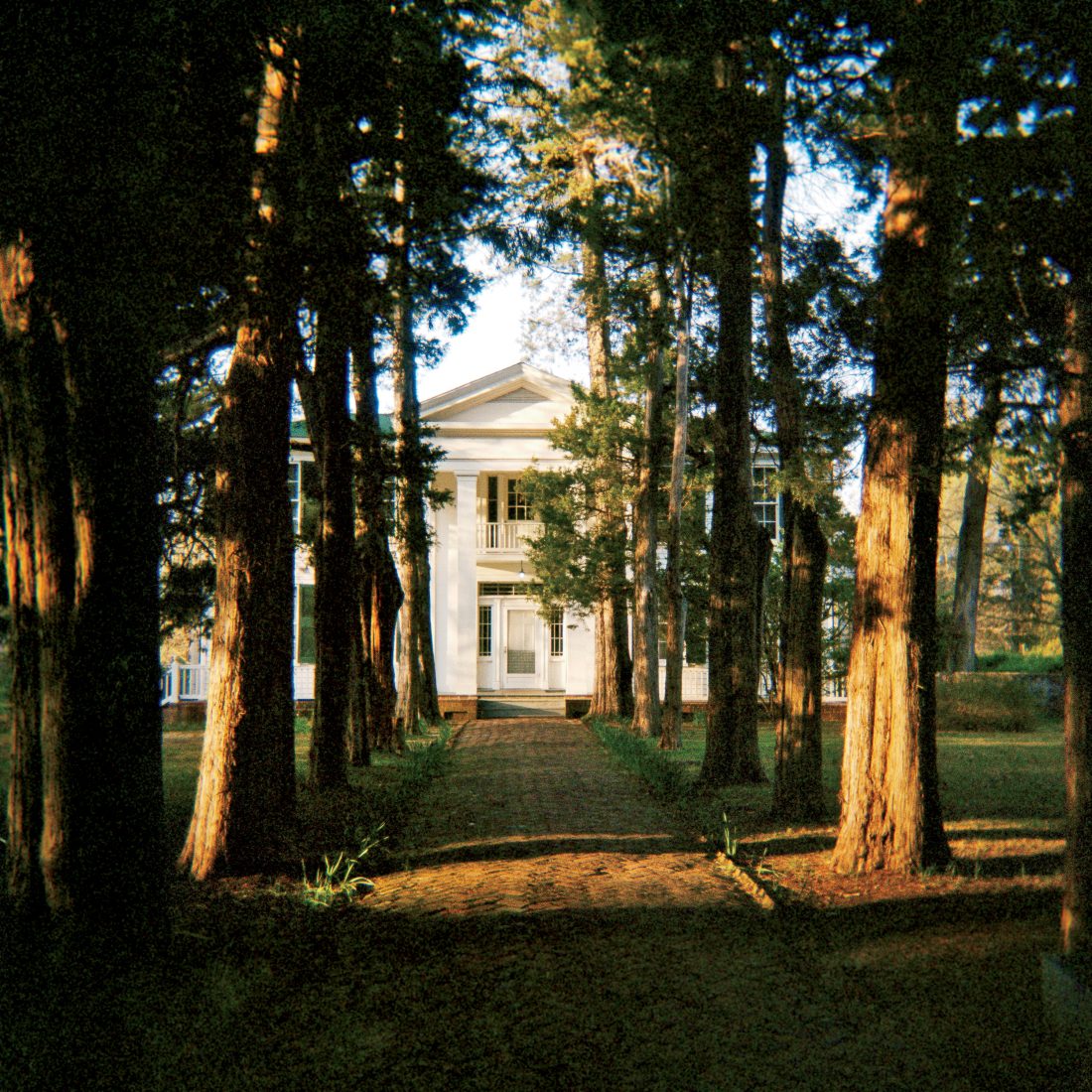Every day I cross the street from my house and enter an alley of towering red cedars. Through their shade I pass into an antebellum maze garden. The bricks that once hemmed in the pristine hedges here are now crumbling. Huge magnolia volunteers grow straight through their intricate rows. My daughter plays with the fairies that populate this overgrown ruin, but my dog is more interested in the old mansion just beside it. She climbs the porch and whines at the door, as if the ghost of William Faulkner might someday let her in.
She’s out of luck, of course. But though Faulkner is long gone, this place—Rowan Oak, his historic home and the thirty-three acres around it—still stands just off the main drag in Oxford, Mississippi, where it’s maintained by the University of Mississippi as a literary landmark, museum, and nature preserve.
“I know people would love to get their hands on that garden, but I’m not going to let them,” says William Griffith, Rowan Oak’s curator, who for the past fourteen years has been committed to keeping the place as close to the way Faulkner left it as possible. And for those in the know, Griffith—a whiz-bam storyteller with charisma to spare—is almost as much of an attraction as the house itself. It is a lesson I learned the first day I moved into town. My new house was across the street, and I’d barely unpacked my car before I set off for Rowan Oak. Within minutes Griffith was giving me a personal tour, even sneaking me into Faulkner’s pantry, a closed room where the walls are covered in phone numbers written directly onto the plaster by Faulkner himself.
“We even get celebrities here,” Griffith says, reeling off the names of illustrious visitors while seated beneath a photo of Morgan Freeman on the porch, “and we treat them just like anyone else.” But considering how he’s welcomed me since the day I arrived, I guess he means that everyone—famous or not—gets the VIP treatment.
Built in 1844, the two-story house was in such a state of disrepair when Faulkner purchased it in 1930 that his stepson said “a strong wind would blow it over.” And although Faulkner greatly improved the structure over the thirty-two years he spent in it, the grounds received different care. The former owner had let its antebellum gardens go to seed, and when Faulkner’s wife, Estelle, expressed her desire to restore them, Faulkner said, “Only new money would ruin a garden like that.” And so they were left in their state of natural ruin, and that’s pretty much how you’ll find them today.

Photo: Susana Raab
Faulkner’s old Underwood typewriter and desk.
For five dollars, visitors can tour the home, but free and open to the public every day of the year, the grounds and gardens are the real attraction for me. Here vines twist up anything vertical. Craggy Osage orange trees are covered with flourishing ferns. Wild turkey, deer, and foxes roam through sprawling hedges. The grass is spotty, overtaken by the same phosphorescent moss that also glows on the damp bark of the trees, and when the afternoon light (perhaps that of August?) hits the thick canopy of leaves, the air seems to radiate, as if whipped into some vernal froth. All of this, which makes Rowan Oak so much more than just another historic house, seems also to describe Faulkner’s fiction: dense, thorny, complicated by the intersection of nature and man, and lovely.
“It’s the Central Park of Oxford,” Griffith says, and though more than twenty thousand people a year visit, most often I find myself there alone. At sunset, I’ll sit on the porch of the servants’ quarters and throw a stick to my dog. Sometimes, if the night is clear, I’ll walk across the pasture in the moonlight. Faulkner said he relied on this, his own “postage stamp of native soil,” for inspiration, and I’ve come to understand why. Rowan Oak holds within it the same mysterious pleasures of a maze: It’s where I go when I want to get lost and not be found.








